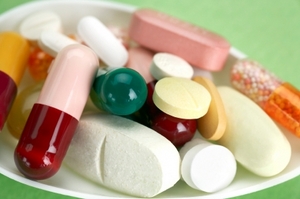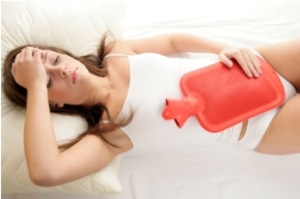Every month at varying times, Google search engines must go crazy with requests for information on relief of menstrual (and pre-menstrual) symptoms. Having had to deal with the discomfort associated with this natural process on several occasions, I was adamant about finding some sort of effective relief. As many women will agree, the menstrual cycle is a very personal, yet universal issue-one which comes with it, varying degrees of distress. It is not unusual to experience symptoms both before (PMS) and during one’s period. The list of “ailments” associated with it can be fairly lengthy. But suffice it to say, headaches, migraines (yes, there is a difference), backaches, stomach pain, and irritability are all popular symptoms. In the past, I have found it difficult to achieve a relative state of ease using over-the-counter (OTC) medications, without some sort of adverse side effects. Thus, here is my personal study on the effectiveness of three very popular OTC menstrual medications.
Medicine #1 : Pamprin Maximum Strength ($7 – $8 per 40 count)
Before purchasing this medicine, I took heed to the back of the box for a list of symptoms that this OTC drug is said to relieve:
Headache
Backache
Cramps
Irritability
Water Weight Gain
Premenstrual Tension
These symptoms seemed to be right up my alley. I will admit that I was curious about the “irritability” and “premenstrual tension” indicators. What kind of tension? Emotional tension? Tension in the muscles? I read further on the package to try and size up the chemicals contained therein. A diuretic helped to eliminate water weight gain. This seemed to be a reasonable ingredient. An analgesic (pain killer) was said to relieve the painful symptoms. This too, was normal. Ironically, on the drugstore.com website where Pamprin Maximum Strength can be found, the description for “irritability relief” was inexplicably vague. However, the warning label also mentioned that the product could cause drowsiness.
I popped two of these little white pills according to the directions, and was quite disappointed with the results. The pain I was experiencing never quite seemed to go away. In fact, after a few hours, I felt as if I’d not taken anything for my cramps at all. I didn’t experience any drowsiness, although, in my condition it would have been difficult to determine whether I was fatigued from the drugs or from my cycle itself. In any case, my second dose about 5 hours later proved to be no more helpful. For me, Pamprin Maximum Strength was a failure. In checking out online reviews, another user echoed my sentiment:
“…i figured these [Pamprin pills] would take care of my [cramps], no problem…wrong. I take 2, I get about 5 minutes of relief from my cramps, and then the pain is back.”
Medicine #2 : Midol Menstrual Complete ($5 – $7 per 24 gel caps)
One of the most popular OTC menstrual relief brands on the market is Midol. With several different varieties to choose from, it can be a tad overwhelming attempting to establish which one is the best for any one set of symptoms. The Midol.com website has a neat little interactive feature that helps determine which Midol product is best for one’s needs. By clicking in the boxes next to a list of symptoms, the site will then “choose” the best product for you. Interestingly, Midol lists “fatigue” as a symptom instead of “irritability” (though at one time it did list the latter as an ailment.) This symptom is also addressed by Midol Menstrual Complete. Also interesting, is that this product claims to address breast tenderness–how it does that, nonetheless is still a mystery to me.
Feeling confident in Midol’s ability to tackle a myriad of problems, I carefully followed the instructions, taking two shiny blue gel caps for a blissful 6 hours of relief. I noticed that after taking the pair of pills, my cramps had eased somewhat. But additionally, I felt groggy, nauseated, and strangely jittery all at the same time. For a few years I took these pills and associated all these feelings with my period itself. It wasn’t until I tried other medications that I realized that Midol’s ingredients are in fact, a bit too intense for me.
Pyrilamine maleate found in Midol Menstrual Complete is an active diruetic. This diuretic is designed to control bloating by inducing the urge to urinate. Upon researching this chemical, I realized that it routinely causes drowsiness and muscle weakness, which could account for the worn down feeling I was experiencing. On the other hand, Midol attacks fatigue by including 60 mg of caffeine, which is the equivalent to at least one cup of coffee. (This is why the warning label advises against consuming additional caffeinated beverages.) Combine this stimulant with the digestive discord I normally associated with menstrual cramps, and what I ended up with was a classic case of the Queasy Jitters, with a side order of malaise, and cramps that continued to linger. Needless to say, I stopped taking Midol Menstrual Complete.
Medicine #3 : Aleve tablets ($4 – $6 per 24 count)
When a wave of menstrual pain assaulted me at a friend’s house, she offered me Aleve, as she had no menstrual pain medicine available. I had used this OTC medication before for a simple headache, and was pleased with the results. In any case, I was advised not to exceed two caplets in a 12 hour window, as the chemicals in this drug are made specifically to combat pain over an extended period of time.
In reading the instructions and ingredient label, I noticed that the major component of this medication is naproxen. Naproxen is essentially an anti-inflammatory drug that has been proven quite effective in the relief of arthritic pain. Logically, the fact that it alleviates stiffness in arthritis patients makes it reasonable that the muscle fatigue associated with menses would also be effectively quashed. (200 mg of naproxen, which is designed to provide time-released pain relief, can also be found in Midol’s “Extended Relief” formula.)
Since Aleve contains 220 mg of the anti-inflammatory agent, doctors advise patients to take it very carefully. This drug has been linked to some pretty serious ailments, like heart attack and even stomach bleeding. For that reason, it’s important to take the exact recommended dose unless otherwise instructed. What I discovered is that two Aleve pills are more than satisfactory in resolving my menstrual crisis. Even more delightful was the discovery that my menstrual cramps were kept at bay for an entire workday. The bloating, fatigue, and other symptoms I typically endure also became non-existent. Honestly, I do not know if the naproxen has an effect on other aspects of the “menstrual condition.” But I would certainly recommend this OTC drug over the myriad of medications designed for this purpose.




